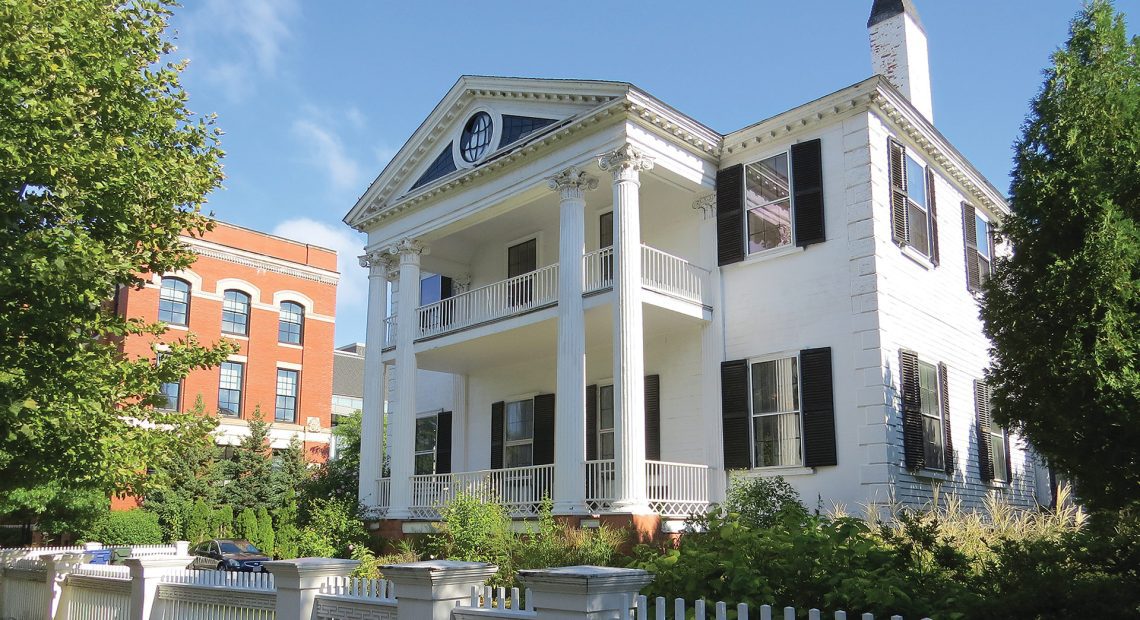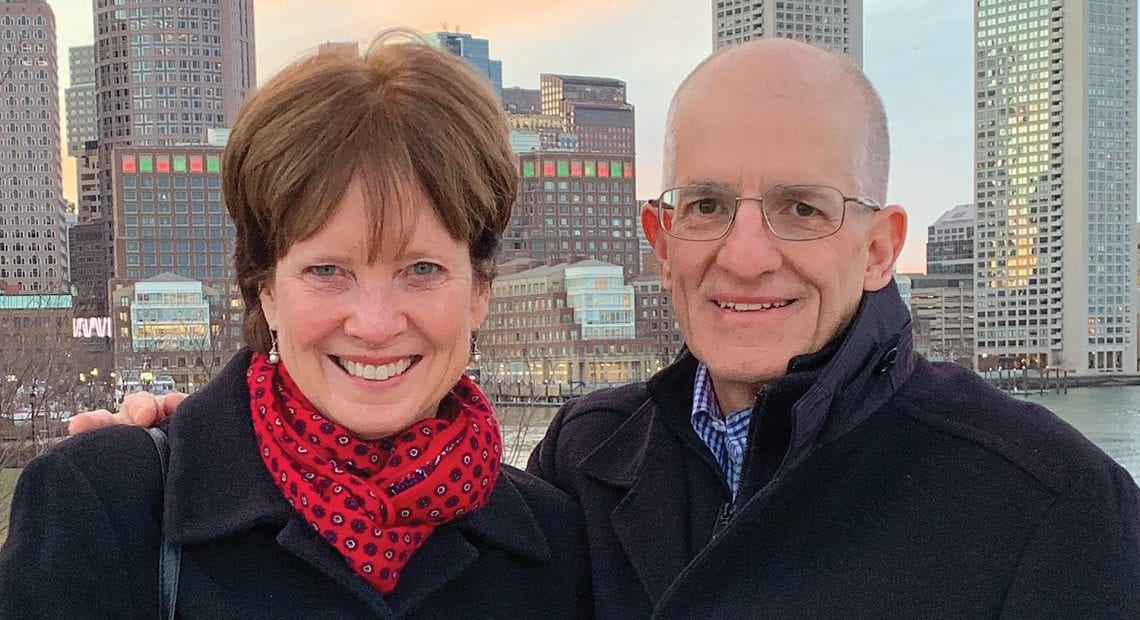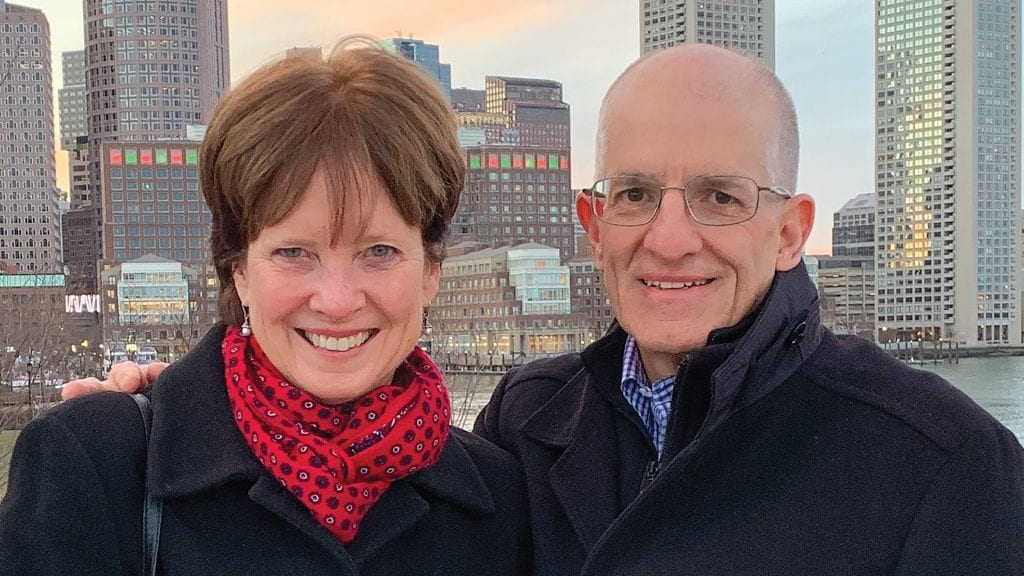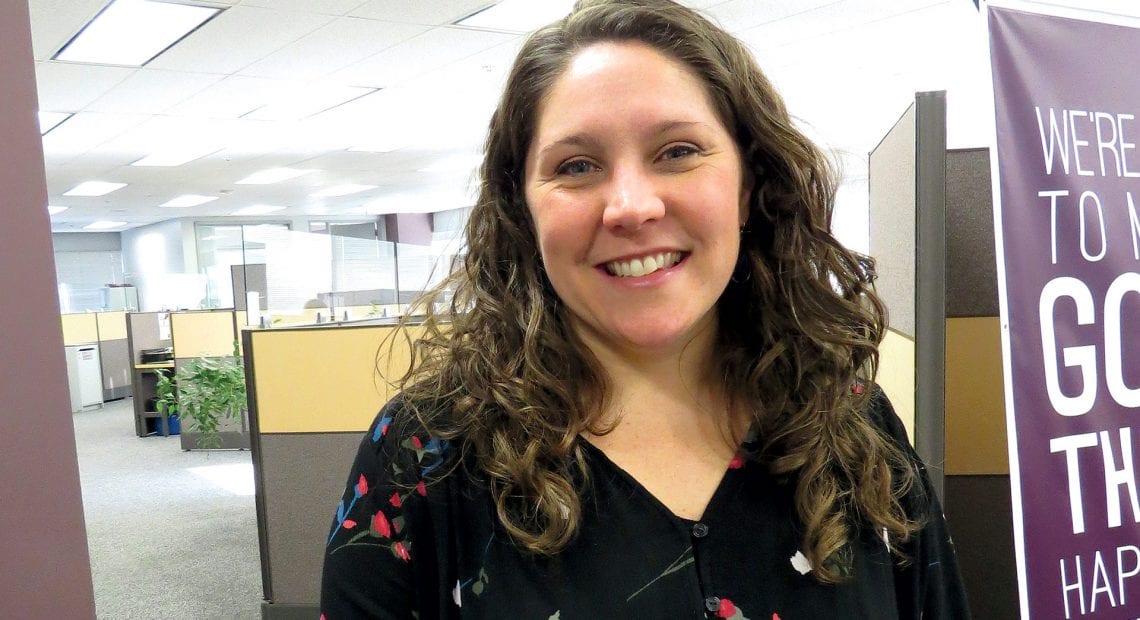Closing the Gap

Amanda Gould says the grant awarded to Bay Path University will fund a collaborative effort to help improve the digital fluency of the workforce.
When people talk about an ‘IT gap,’ Amanda Gould says, the appropriate response might be, ‘which one?’
Indeed, there’s the gap that seems to getting most of the attention these days, the one that involves the huge gender disparity in the IT workforce, with the vast majority of those well-paying jobs going to men, said Gould, chief administrative officer for the American Women’s College at Bay Path University, one of the institutions working to do something about this through its expanding Cybersecurity and IT degree programs.
But there’s another gap, she said, and this one involves the workforce and its digital fluency — or lack thereof. In short, too many people lack the necessary skills to thrive in the modern workplace, especially in IT-related roles, and the need to devise solutions for changing this equation is becoming critical.
For this reason, the nonprofit Strada Education Network committed $8 million to what it calls the ‘innovative solutions in education-to-employment’ competition, a name that speaks volumes about its mission.
And Bay Path emerged as one of the winners in this competition, garnering $1.58 million for a three-year project appropriately called “Closing the Gaps: Building Pathways for Women in a Technology-driven Workforce” (note ‘gaps’ in the plural).
This will be a collaborative effort, said Gould, adding that work is already underway with a number of partners, including the Economic Development Council of Western Mass., the MassHire Hampden County Workforce Board, the Massachusetts Technology Leadership Council, Pas the Torch for Women, Springfield Technical Community College, the UMass Donohue Institute, and others.
“Thinking about IT being in and of itself a discipline is, in my view, becoming obsolete.”
This work, said Gould, “involves extensive employer research and engagement, and building capacity of the American Women’s College to scale enrollment of adult women and prepare them with core cybersecurity and information-technology competencies that meet the needs of employers, support them as they move to degree completion, and assist them to successfully transition to careers in cybersecurity and IT-related employment.”
The key word in that sentence is ‘core,’ she said, because such competencies are now needed to succeed in jobs across virtually all sectors, not just IT and cybersecurity, and, as noted, many individuals simply don’t have them, and thus doors to some opportunities remain closed.
Opening them is the purpose of the of the Strada Education Network program, said Gould, adding that it will address a large problem that is obvious, yet often overlooked.
“What we’re not doing well overall when we think about our workforce is recognizing that technology is becoming increasingly more important in any role in any industry,” she explained. “Thinking about IT being in and of itself a discipline is, in my view, becoming obsolete; technology is a part of any organization running, and we should be less focused on training people to live in a silo or column that prepares them to fulfill very specific functions, and instead be training our women across all our majors to be thoughtful about how technology may impact their future roles in the workforce and how to be more engaged with ways technology helps them perform the aspirations they have in a variety of careers.”
Patricia Crosby, executive director of the MassHire Franklin Hampshire Workforce Board, agreed. She said her agency and other workforce-related partners will play a key role in this initiative — specifically bringing business leaders and those in the education sector together in the same room to discuss how curriculum can and should be structured to vastly improve the odds of student success and make what has been a fairly closed field much more open.
“The IT field has not been an open field to newcomers, diverse workers, and female workers,” said Crosby. “The Bay Path program is attempting to remedy some of that and make the pathways clearer.”
Overall, the nearly $1.6 million grant will be put toward a variety of uses, said Gould, who listed everything from career coaching to scholarships; from curriculum development to putting students in situations where they’re getting hands-on training in their chosen field. And all of them are pieces to the puzzle when comes to not only entering the workforce, but succeeding in a career.
For this issue and its focus on education, BusinessWest takes an in-depth look at the ‘closing the gaps’ initiative and why it is so critical when it comes to today’s workforce.
Keys to Success
Smashing Bay Path’s program down to a few key swing thoughts, Gould said it basically involves determining which IT skills are most needed in the workplace, which ones are missing in a large number of applicants and employees, and how to effectively provide those skills.
And while it’s easy to state the problem and this three-year project’s goals, devising solutions won’t be quite so easy because the problems are systemic and fairly deep-rooted.
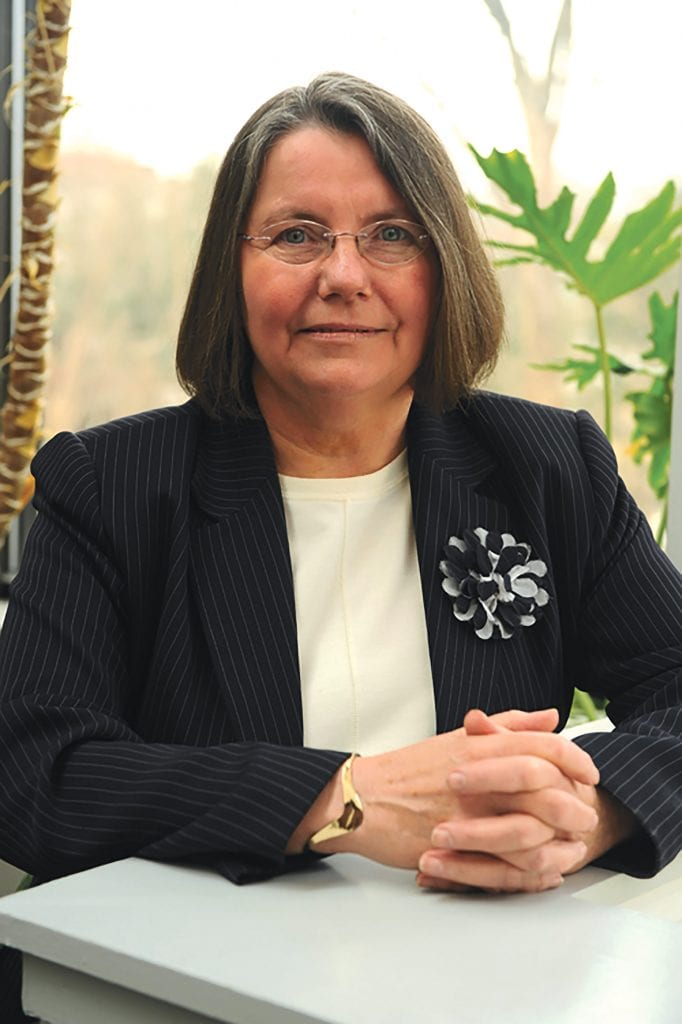
Patricia Crosby says the grant awarded to Bay Path University will help create clearer, better pathways into an IT field that historically has not been open to women, newcomers, and diverse workers.
“As higher-education institutions,” Gould explained, “we haven’t kept up with our education and our curriculum to make sure that, as students are leaving with a psychology degree or a communications degree or nursing degree, we are building in exposure to these tool sets and these skills. By being more theoretical in our education, we’ve almost created the gaps.
“I really think we’re at a moment in time when we need to be more thoughtful about integrating technology for all students,” she went on, adding that, if those in higher ed created the gaps, it’s now incumbent upon them to close them.
Elaborating, she noted that cybersecurity, while still a specific discipline and course of study, is also part of myriad job descriptions today — for those helping with social-media campaigns to those handling customer records — and thus cyber should be part of occupational training.
This is a relatively new mindset, she acknowledged, one that involves a close partnership between the business community and those in higher education.
To put it in perspective, she cited some research conducted by Strada and Gallup regarding the relevancy of educational programs.
“When they were interviewing higher-ed administrators about how prepared they thought their students were for the workforce, a majority of them said ‘they’re very prepared,’” she noted. “But when they interviewed employers, a very small percentage of them thought the students were truly prepared to enter the workforce. There’s an enormous disconnect.”
A commitment to closing it explains why the Strada network is giving $8 million to seven winners of its competition, and also explains why partners like the EDC and the MassHire facilities will play such a critical role in this endeavor.
They will help connect those with the project to industry groups and specific companies with the goal of not only determining the skill sets they need in their employees, but placing students in situations where they gain valuable hands-on experience.
These experiences can include job shadowing, interviewing someone in a particular role, project-based coursework, or actual internships, said Gould.
“There are a variety of ways we can get our students connected with employers,” she said, adding that such connections are vital to understanding the field, comprehending the role IT plays in it, and, ultimately, gaining employment within that sector.
“In an ideal scenario, our students are off and working,” she went on. “It would be better if they were working in a field they see as their career rather than in a job where they’re working to offset expenses. If there are ways to get students into the workplace before graduation, we want to nurture those entry points.”
Crosby agreed.
“In an ideal scenario, our students are off and working. It would be better if they were working in a field they see as their career rather than in a job where they’re working to offset expenses.”
“In this field [IT], more than any other, as much as any credentials or degrees, employers are looking for experience,” she said. “There’s a gap between the people who are learning it and the people who are getting the jobs because the people who get the jobs already have experience. There’s a bridge that has to be crossed between any education and training program and the workplace.
Sound Bytes
As she talked about the Bay Path program and how to measure its success, Gould said there will be a number of ways to do that.
These include everything from the level of dialogue between the business community and those in education — something that needs to be improved — to the actual placement rates of graduates in not only the IT and cyber fields, but others as well.
In short, the mission is to close the gaps, as in the plural. There are several of them, and they are large, but through a broad collaborative effort, those involved in this initiative believe they can begin to close those gaps and connect individuals to not only jobs but careers.
George O’Brien can be reached at [email protected]






